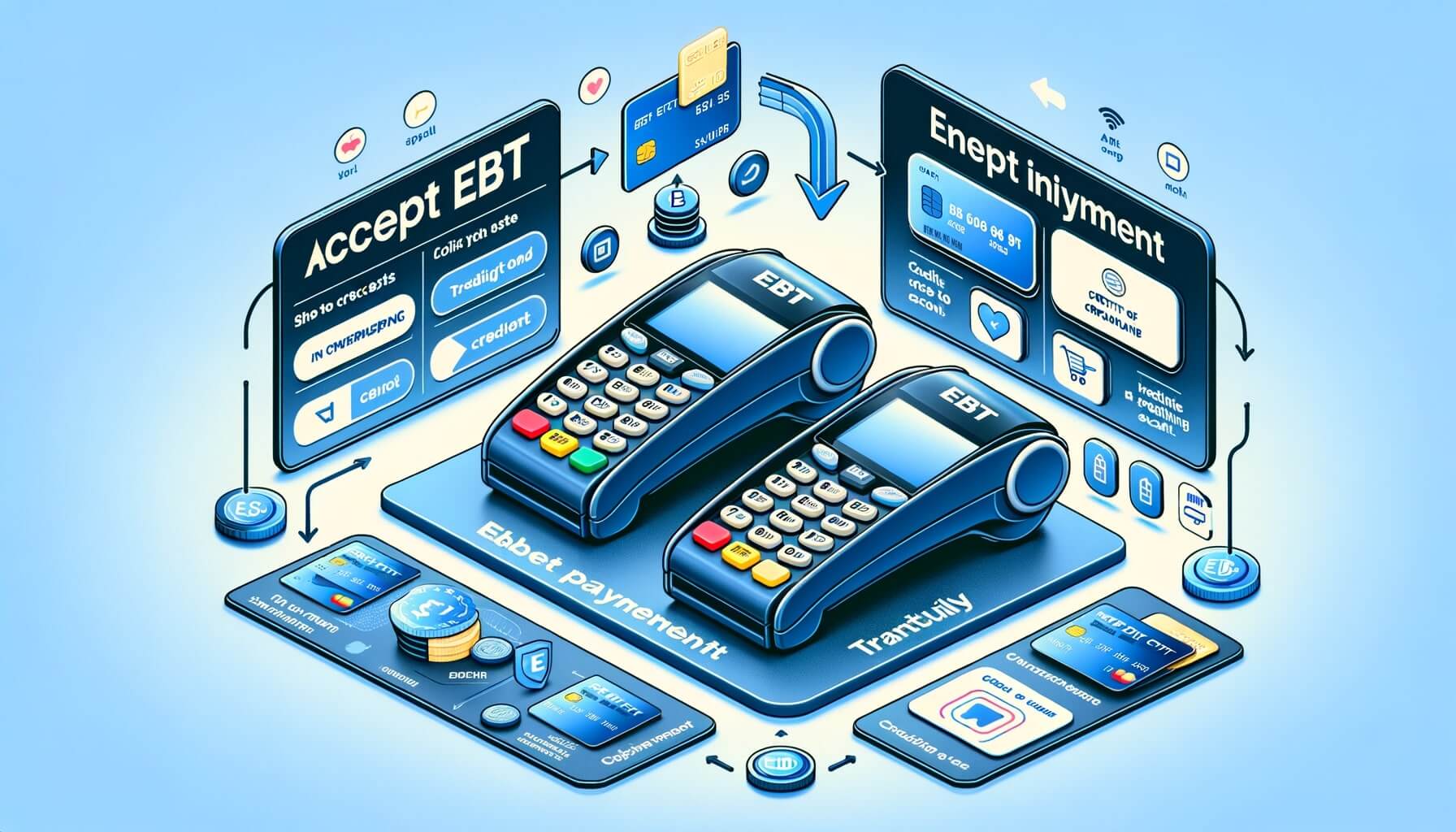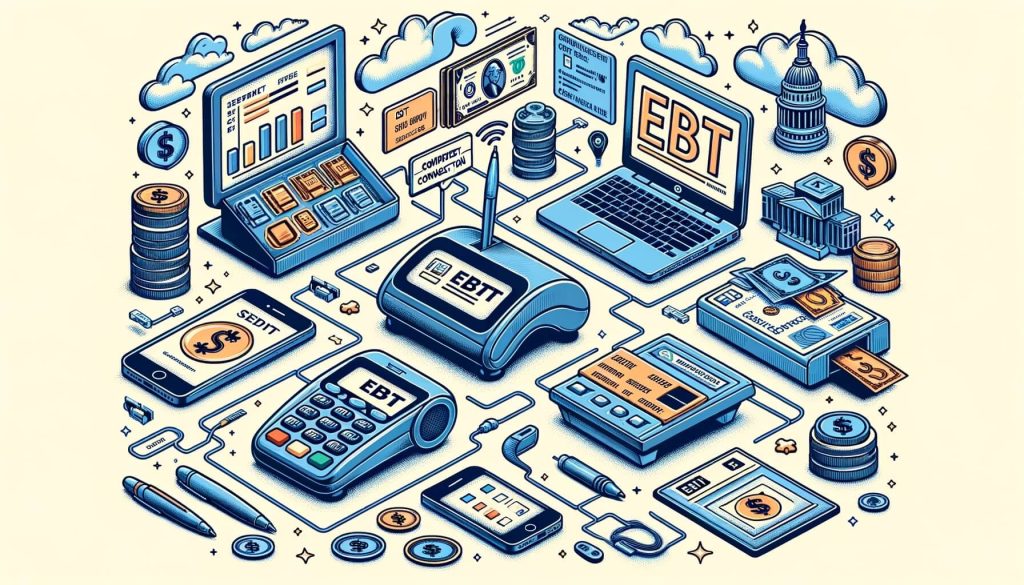
By manoj February 10, 2025
Electronic Benefit Transfer (EBT) is a system that allows recipients of government assistance programs, such as the Supplemental Nutrition Assistance Program (SNAP), to access their benefits through a debit card. EBT payments have become an essential part of the retail landscape, as they provide a convenient and secure way for individuals and families to purchase essential goods and services.
Accepting EBT payments in your store can not only increase your customer base but also contribute to the well-being of your community. In this comprehensive guide, we will explore the requirements and steps involved in accepting EBT payments in your store.
Eligibility Criteria for Accepting EBT Payments

Before you can start accepting EBT payments, it is crucial to determine if your store meets the eligibility criteria set by the United States Department of Agriculture (USDA). The USDA oversees the administration of the SNAP program and sets the guidelines for EBT acceptance. To be eligible, your store must primarily sell food items for home preparation and consumption.
This includes grocery stores, supermarkets, convenience stores, and farmers markets. However, certain types of businesses, such as restaurants and liquor stores, are generally not eligible to accept EBT payments.
To qualify for EBT acceptance, your store must also meet specific sales requirements. The USDA mandates that at least 50% of your total sales must come from eligible food items. This means that non-food items, such as household supplies or pet food, cannot account for more than half of your sales. Additionally, your store must offer a variety of staple food items, including fruits, vegetables, dairy products, meat, poultry, and fish.
Obtaining an EBT Merchant Account: Step-by-Step Guide

Once you have determined that your store meets the eligibility criteria, the next step is to obtain an EBT merchant account. An EBT merchant account is a specialized account that allows you to process EBT transactions. To obtain this account, you will need to follow a step-by-step process:
1. Contact an Authorized EBT Processor: The first step is to find an authorized EBT processor. These processors are approved by the USDA to handle EBT transactions. Research different processors and choose one that suits your business needs.
2. Complete the Application: Once you have selected a processor, you will need to complete an application form. This form will require you to provide information about your store, such as its name, address, and contact details. You may also need to provide documentation, such as your business license or tax identification number.
3. Undergo a Background Check: As part of the application process, you and any other individuals associated with your store may be required to undergo a background check. This is to ensure that you have not been involved in any fraudulent activities or violations of EBT regulations.
4. Set Up EBT Equipment: After your application is approved, you will need to set up the necessary equipment to accept EBT payments. This typically includes a point-of-sale (POS) system or a card reader that is compatible with EBT cards.
5. Train Your Staff: Once the equipment is set up, it is essential to train your staff on how to process EBT transactions. They should be familiar with the EBT system, understand the rules and regulations, and be able to assist customers with any issues or questions they may have.
Equipment and Technology Requirements for Accepting EBT Payments

Accepting EBT payments requires specific equipment and technology to ensure smooth and secure transactions. Here are the key requirements:
1. Point-of-Sale (POS) System: A POS system is the central hub for processing EBT transactions. It allows you to scan EBT cards, enter purchase amounts, and complete the transaction. Ensure that your POS system is compatible with EBT processing and has the necessary software updates.
2. Card Reader: A card reader is a device that reads the information stored on the EBT card’s magnetic stripe or chip. It is essential to have a card reader that is specifically designed for EBT transactions to ensure accurate and secure processing.
3. Internet Connection: To process EBT transactions, you will need a stable and reliable internet connection. This is necessary for real-time authorization and communication with the EBT processor.
4. Receipt Printer: A receipt printer is required to provide customers with a printed record of their EBT transaction. Make sure your printer is compatible with your POS system and can generate clear and legible receipts.
5. EBT Signage: Displaying EBT signage in your store is a requirement for accepting EBT payments. This helps customers identify that your store accepts EBT and promotes transparency.
Staff Training and Compliance with EBT Regulations

To ensure smooth EBT transactions and compliance with EBT regulations, it is crucial to train your staff adequately. Here are some key areas to focus on during staff training:
1. EBT Program Overview: Provide your staff with a comprehensive overview of the EBT program, including its purpose, benefits, and eligibility requirements. This will help them understand the importance of EBT payments and how they contribute to the well-being of the community.
2. EBT Transaction Processing: Train your staff on how to process EBT transactions using the POS system or card reader. They should be familiar with the steps involved, such as scanning the EBT card, entering the purchase amount, and obtaining authorization.
3. EBT Regulations and Compliance: Educate your staff about the rules and regulations governing EBT acceptance. This includes guidelines on eligible food items, sales requirements, and prohibited activities, such as exchanging cash for EBT benefits.
4. Customer Assistance: Train your staff to provide excellent customer service to EBT recipients. They should be able to answer questions, assist with any issues or errors during transactions, and provide guidance on eligible food items.
Understanding EBT Transaction Processing and Settlement
EBT transactions involve several steps, from authorization to settlement. Understanding this process is essential for smooth transaction processing and accurate record-keeping. Here is an overview of the EBT transaction processing and settlement:
1. Authorization: When a customer presents their EBT card for payment, the POS system or card reader sends a request for authorization to the EBT processor. The processor verifies the card’s validity, checks the available balance, and approves or declines the transaction.
2. Purchase Amount Entry: Once the transaction is authorized, the cashier enters the purchase amount into the POS system or card reader. This amount should only include eligible food items and exclude any non-food items or prohibited items.
3. Customer Payment: The customer then swipes or inserts their EBT card into the card reader. The system deducts the purchase amount from the customer’s EBT balance and displays the remaining balance, if any.
4. Settlement: At the end of each business day, the POS system or card reader sends a settlement request to the EBT processor. The processor verifies the transactions and initiates the transfer of funds from the government agency to your store’s bank account.
EBT Payment Security Measures and Fraud Prevention
As with any payment system, EBT payments are susceptible to fraud and misuse. Implementing security measures can help protect your store and customers from fraudulent activities. Here are some key security measures and fraud prevention strategies:
1. Secure Equipment: Ensure that your POS system, card reader, and other EBT equipment are secure and protected from unauthorized access. Regularly update the software and firmware to address any security vulnerabilities.
2. Employee Training: Train your staff on how to identify and prevent EBT fraud. This includes recognizing suspicious transactions, verifying customer identification, and reporting any potential fraudulent activities.
3. Transaction Monitoring: Implement a system to monitor EBT transactions for any unusual patterns or suspicious activities. This can help identify potential fraud and take appropriate action.
4. Customer Education: Educate your customers about EBT fraud prevention and the importance of keeping their EBT card and PIN secure. Display signage or provide informational materials to raise awareness.
EBT Payment Reporting and Record-Keeping Obligations
Accepting EBT payments comes with reporting and record-keeping obligations to ensure compliance with EBT regulations. Here are some key obligations to consider:
1. Transaction Reporting: As an EBT merchant, you are required to report your EBT transactions to the USDA or the authorized EBT processor. This includes providing information such as the total sales amount, the number of transactions, and the types of food items sold.
2. Record-Keeping: Maintain accurate and detailed records of your EBT transactions. This includes keeping copies of receipts, transaction logs, and any other relevant documentation. These records should be retained for a specified period, typically three years.
3. Compliance Audits: Be prepared for compliance audits conducted by the USDA or the authorized EBT processor. These audits ensure that your store is adhering to EBT regulations and accurately reporting and recording transactions.
Frequently Asked Questions (FAQs) about Accepting EBT Payments
Q1: Can all types of businesses accept EBT payments?
A1: No, only certain types of businesses, such as grocery stores, supermarkets, convenience stores, and farmers markets, are eligible to accept EBT payments. Restaurants and liquor stores are generally not eligible.
Q2: How can I determine if my store meets the eligibility criteria for accepting EBT payments?
A2: To determine eligibility, you must primarily sell food items for home preparation and consumption. At least 50% of your total sales must come from eligible food items, and you must offer a variety of staple food items.
Q3: How long does it take to obtain an EBT merchant account?
A3: The time it takes to obtain an EBT merchant account can vary. It depends on factors such as the processor’s application processing time, background checks, and equipment setup. It is advisable to start the process well in advance to ensure a smooth transition.
Q4: What equipment do I need to accept EBT payments?
A4: You will need a POS system or card reader that is compatible with EBT processing, an internet connection, and a receipt printer. Additionally, displaying EBT signage in your store is a requirement.
Q5: How can I prevent EBT fraud in my store?
A5: Implement security measures such as securing your equipment, training your staff to identify and prevent fraud, monitoring transactions for suspicious activities, and educating your customers about fraud prevention.
Conclusion
Accepting EBT payments in your store can be a valuable addition to your business. By meeting the eligibility criteria, obtaining an EBT merchant account, and fulfilling the equipment and training requirements, you can provide a convenient and secure payment option for individuals and families in need.
Understanding the EBT transaction processing, security measures, and reporting obligations is crucial for smooth operations and compliance with EBT regulations. By following the guidelines outlined in this comprehensive guide, you can successfully accept EBT payments and contribute to the well-being of your community.